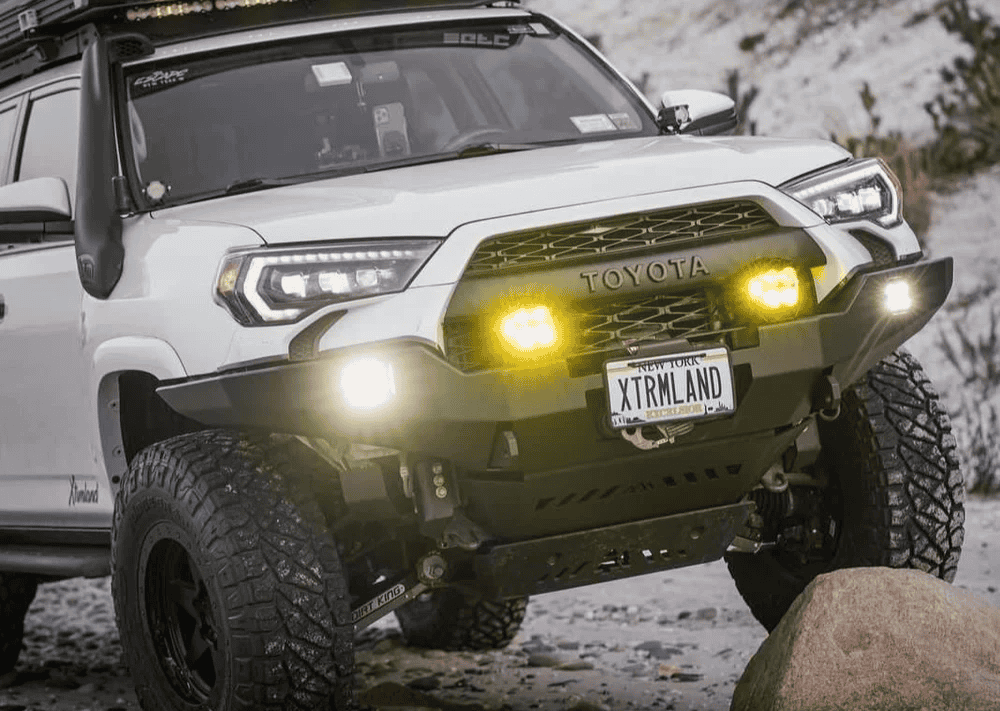Overland Vehicles

A rear drawer turns empty cargo space into predictable storage. It creates repeatable locations for recovery tools, cooking kits, camp supplies, and spares so packing does not change every trip. Good layout saves time at camp and improves safety because you know the exact drawer to open when you need a first aid kit or tire repair gear. It also reduces shifting loads, which helps handling on broken surfaces and keeps noise down inside the cabin. When designed well, the system becomes a workflow that speeds up every stop.
Corrugations and rocky climbs expose weak layouts. Dividers should match the size of real items, not just a generic grid. Tall items need lids or straps so they do not bounce. Low friction surfaces let heavy tools slide without chewing up the base, while rubberized liners stop lighter items from skittering. Latching that locks positively in open and closed positions keeps drawers from creeping and slamming.
Materials set the tone for weight, stiffness, and longevity. Aluminum resists corrosion and keeps weight manageable while still supporting serious loads with correct section design. Steel frames bring excellent stiffness and cost control, though careful coating and drainage are needed to prevent rust. High grade plywood or composite panels add a warmer finish and can dampen vibration when paired with metal framing. Hardware choice is just as important. Full extension locking slides are common because they reveal the entire drawer and can hold position on uneven ground.
Slide rating numbers are useful, but look for how they were tested and whether the rating applies when fully extended. Overtravel slides that extend beyond one hundred percent can clear tailgates and bumpers, improving access to the rear corners of the drawer. Bearings should roll smoothly with minimal play to control rattle. In gritty environments, sealed or shielded designs reduce binding. A stout face frame and reinforcement behind the handle distribute force so the drawer does not rack under load.
Fitment begins with accurate measurements of the cargo bay length, width, and height, including the narrowest points near wheel wells. Think about the working height at the tailgate so you can see into the back of the drawer without climbing. Consider what lives above the drawer system, such as a sleeping platform, fridge, or dog space. Safety is more than a seat belt analogy. A well anchored system uses factory tie points or engineered brackets that tie into the chassis or reinforced body locations to handle emergency stops and side loads.
Every pound you add eats payload and can shift the center of gravity. Place the heaviest items low and forward in the drawers. Keep the system’s overall height modest if you plan to stack gear above it. Balanced loading between left and right prevents a lean and helps suspension components share the work. If the rig carries a spare water tank or fuel container, design a dedicated bay so those fluids do not wander and concentrate weight on one side of the axle.
Fine dust finds every gap. Drawer faces should meet tight to the carcass with bulb seals or equivalent, and the overall enclosure should reduce dust paths from the tailgate area. In wet regions, marine grade coatings, stainless fasteners, and drain paths keep moisture from pooling after a storm or river splash. Venting the enclosure in a controlled way can prevent pressure changes from pulling dust through small seams when you shut doors and windows.
Rear drawers often share space with a fridge, air compressor, or power station. Plan cable runs with abrasion resistant loom and grommets where wiring passes through panels. Quick disconnects simplify removal for service. If you add a pull out kitchen, keep propane, water, and electrical routes isolated and labeled. Lighting inside the drawers may feel like a luxury until the first pre dawn camp pack up.
Trips evolve. A modular approach with removable dividers, bolt in wings, and accessory plates lets you change the interior layout as your kit changes. Tie down points above the drawers secure duffels, pelican style cases, and soft goods without crushing the drawer functions below. Test the system at home by loading your actual gear, then drive a rough loop to shake out anything that buzzes or binds. Small tweaks early will pay off for years.
Rattles are often a mix of hardware play and item vibration. Felt pads, nylon washers, and accurate tolerances reduce metal on metal chatter. Inside the drawers, use foam blocks or soft cases to fill voids so items do not clink. A quiet rear drawer system for overland rigs makes long highway stretches far less tiring.
Precision matters from the first measurement to the final latch click. A setup that protects your gear, shortens setup time, and stays quiet on rough roads makes every mile more enjoyable.
When you are ready to translate ideas into a system that fits your platform, the team at OZK Customs can help. See examples and build paths on our overland rigs page, explore options on our custom overland upfit page, and learn more about our process on why choose OZK Customs. We design and install tailored storage with proper anchoring, clean wiring, and finishes that match your rig. Clients visit our Fayetteville Arkansas shop, dial in their setup at Adventure Point, and drive out with a system ready for real miles.
Your gear deserves a home that works as hard as you do. Share your travel style and storage needs, and our fabricators will map a rear drawer solution that feels intuitive on day one and dependable on day one hundred.
Ready for a quiet, dust resistant, secure rear drawer that fits your rig and your trips? Tell us how you travel, and OZK Customs will design, fabricate, and install a system that works hard from trailhead to home. Submit the form to start your build plan.
ADDRESS:
6159 E Huntsville Rd, Fayetteville, AR 72701
PHONE:
(479) 326-9200
EMAIL:
info@ozkvans.com